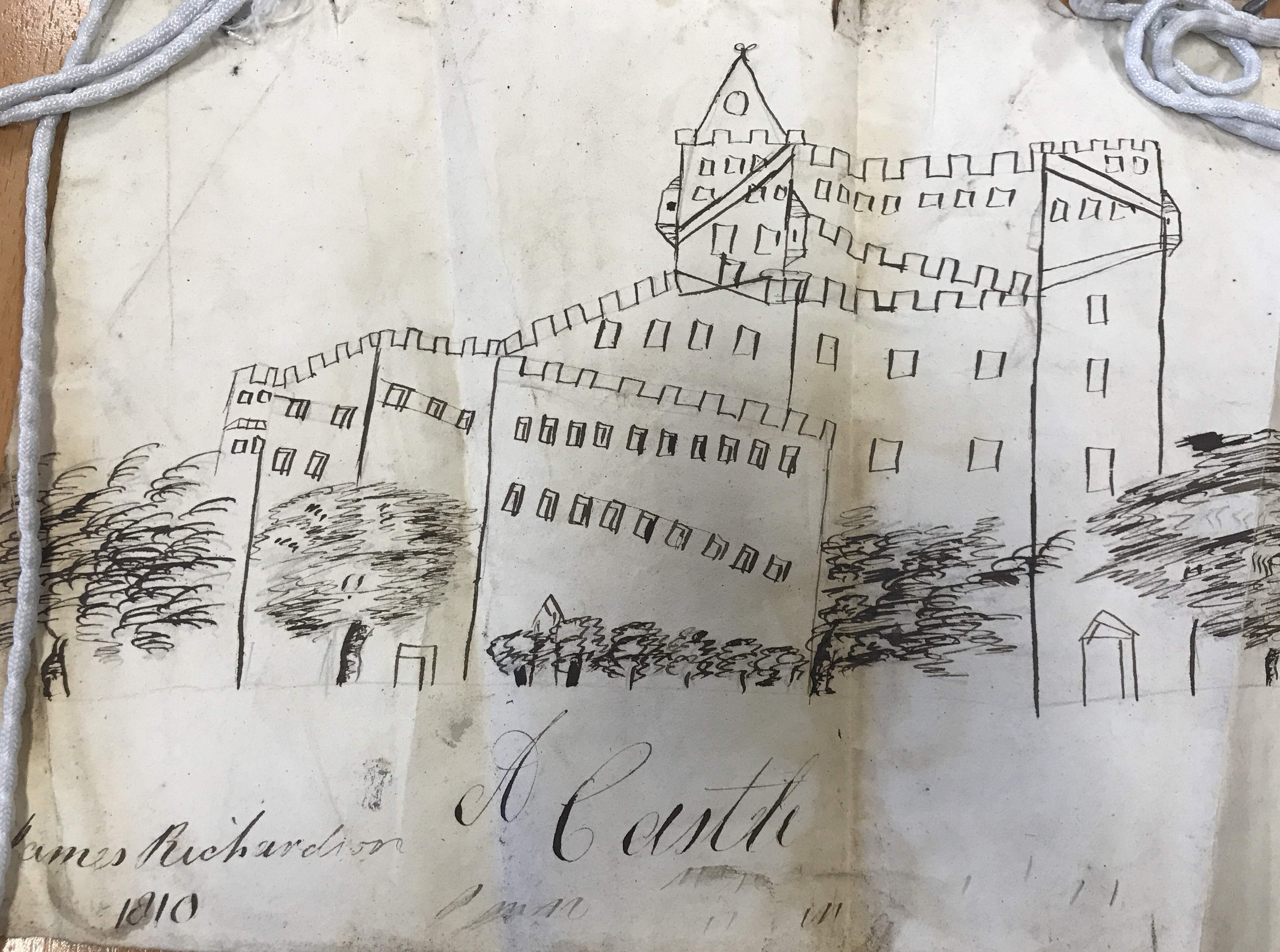
School Libraries in Lowland Scotland, 1750-1850
This update first appeared in a condensed version for the University of Stirling's Arts & Humanities postgraduate page here. Here is a little more about my recent archival research and a forthcoming chapter for the 'Edinburgh History of Reading: A World Survey from Antiquity to Present' (eds. Mary Hammond & Jonathan Rose, Edinburgh University Press, 2019)
The image here is unrelated to my research but a little gem that I stumbled across in the process. A child's drawing of a castle by James Richardson, 1810. Many thanks to Perth and Kinross Council Archive at Culture Perth & Kinross for the permission to include it here. Full Reference: Perth & Kinross Council Archive at Culture Perth & Kinross, MS101/bundle 66
I recently received funding from the Arts and Humanities Research Postgraduate Fund at the University of Stirling which has allowed me to undertake archival research at local council archives across Lowland Scotland and I am very grateful for this!
I visited Perth and Kinross Council Archives and Glasgow City Council Archives at the Mitchell Library to complete essential research for a forthcoming book chapter on ‘The School Library and Childhood Reading in Lowland Scotland, 1750-1850’ which will be published in The Edinburgh History of Reading: A World Survey from Antiquity to Present in 2019 (eds. Mary Hammond and Jonathan Rose). I hope to continue this work with visits to archives in St Andrews, Dundee and Stirling.
For the purposes of this book chapter, I have been looking at the role of school libraries in the period, delving into institutional records to see if, and when, importance was placed on the presence of a library for school children at various institutions. It has been interesting to be able to pin-point the time at which there was a recognition that children having access to a range of books was an important part of their curriculum.
In Perth in 1840, for example, a petition was sent to the Town Council requesting that the money which had thus far been spent on school prizes be used instead “…to assist in the formation of a small Library at each of the Schools, a thing which, in the opinion of your Petitioners will, in the end tend more to promote the religious, moral, and intellectual improvement of those under their care”. Records like these allow us to see when the school library became an important part of childhood education across Scotland, not only in elite schools such as the Royal High School, and the reasons for institutions to push for these.
My trips to Perth and Glasgow were both interesting and fruitful, not only for this book chapter, but for my PhD research in general. For my PhD thesis, I’ve taken a case-study approach, looking in detail at the reading practices of young people at three institutions: the Royal High School of Edinburgh, the University of St Andrews, and Innerpeffray Library in Perthshire. It is therefore fascinating, and very useful, to look at other areas of Lowland Scotland to investigate how children and young adults were accessing books and what they may have been reading in this period.